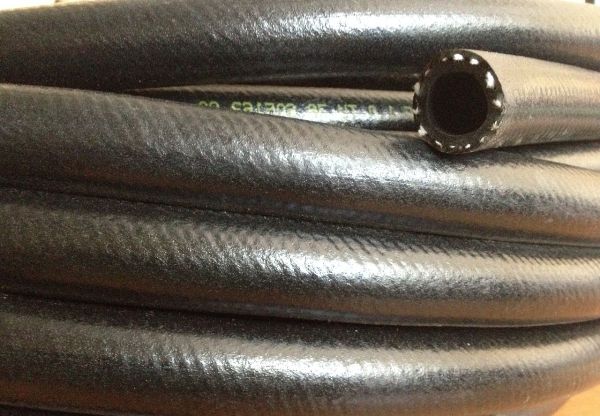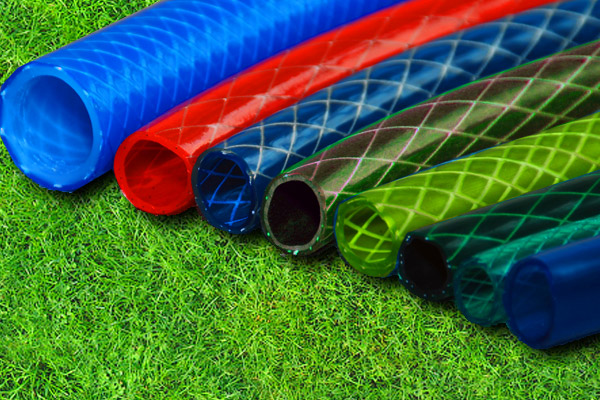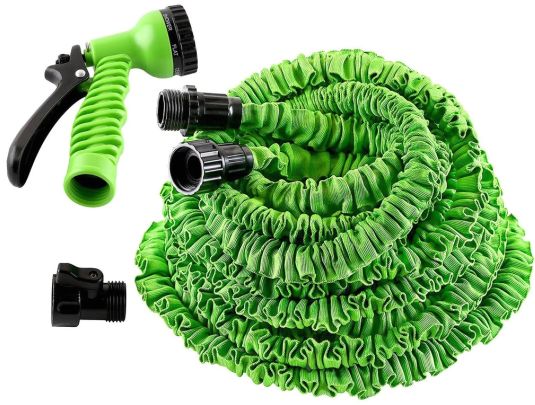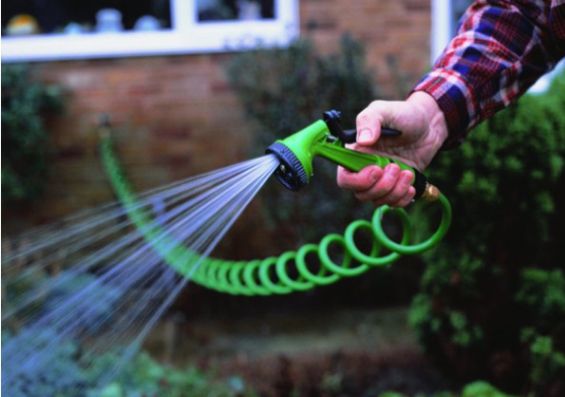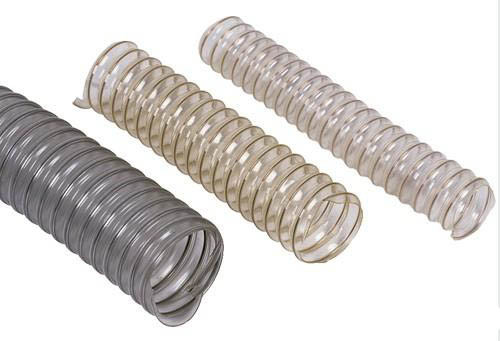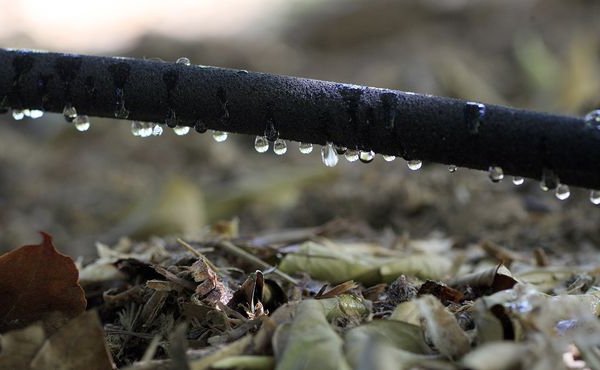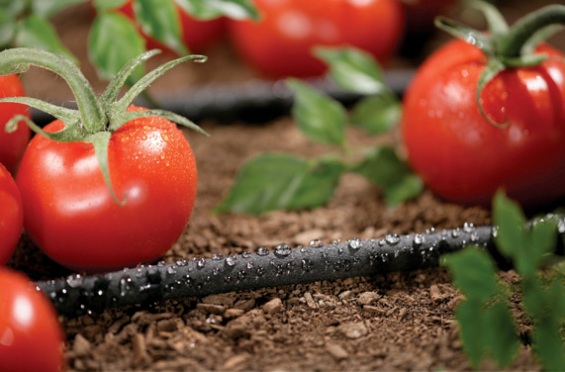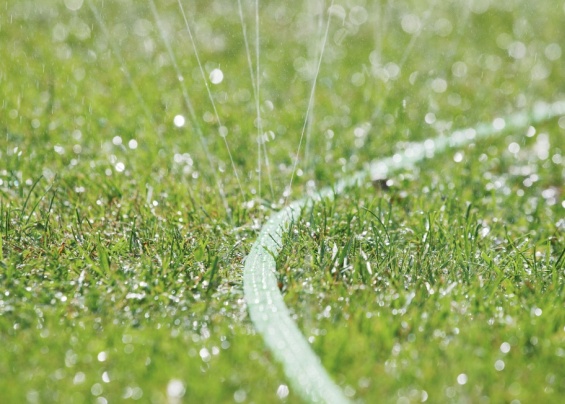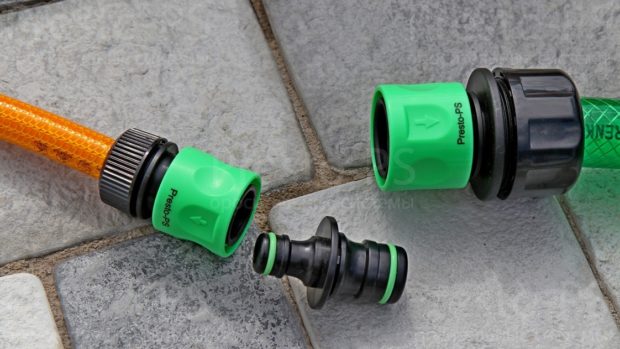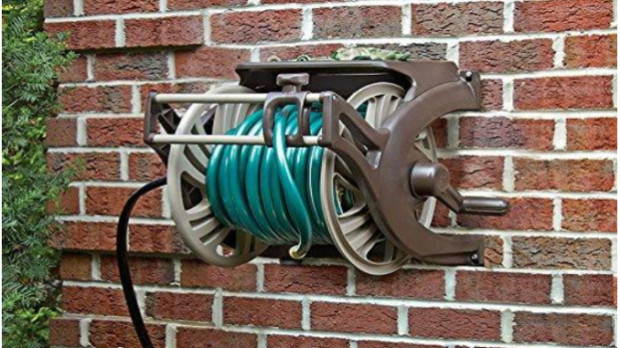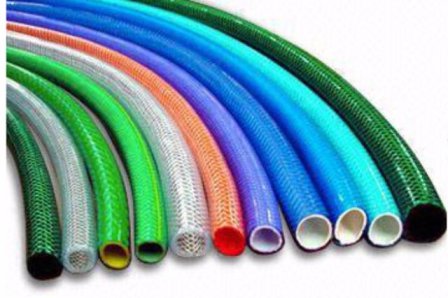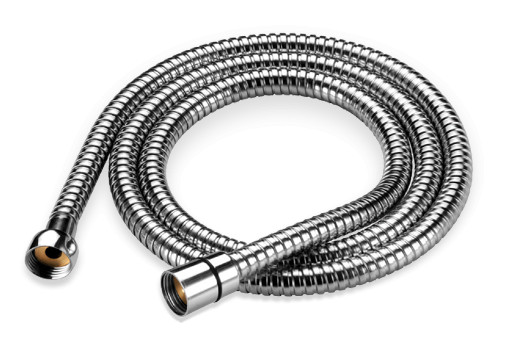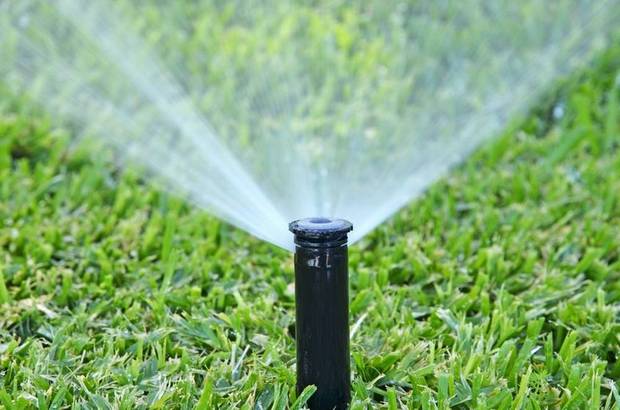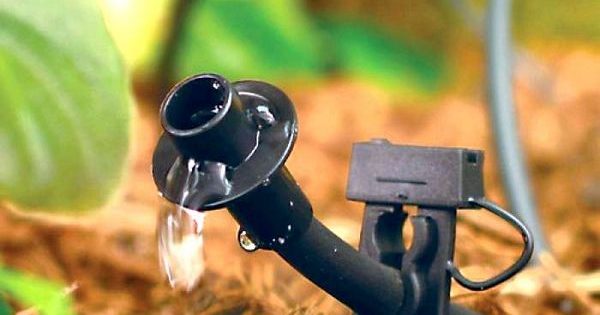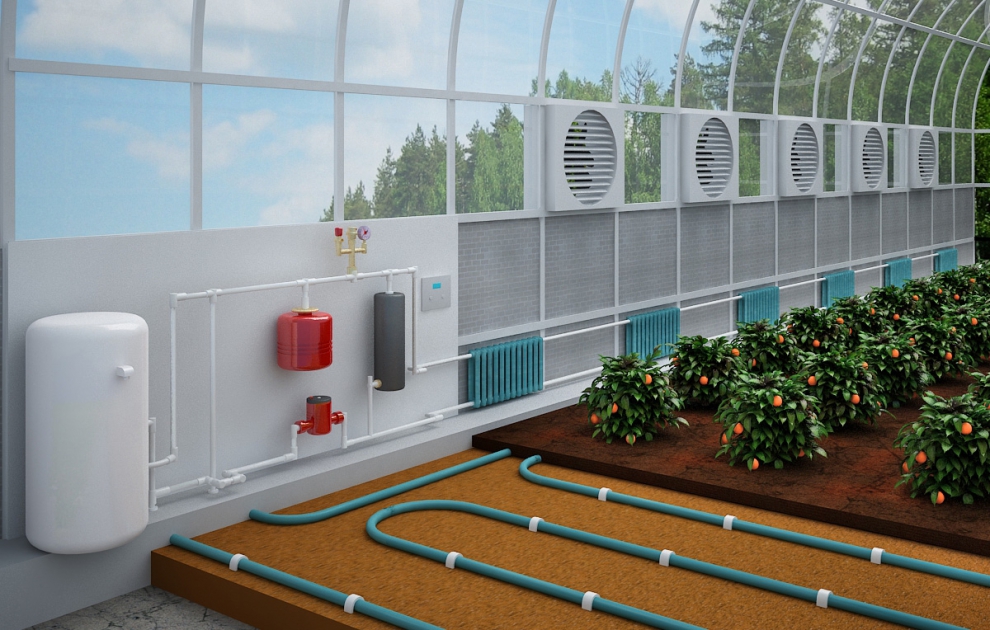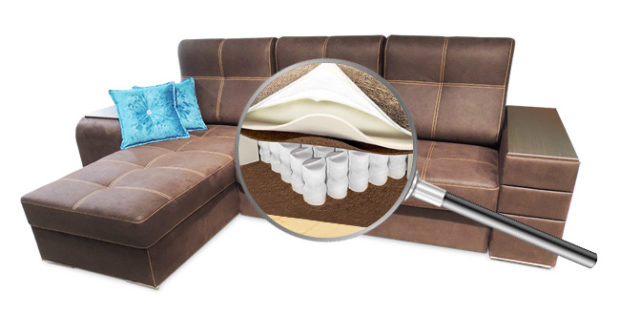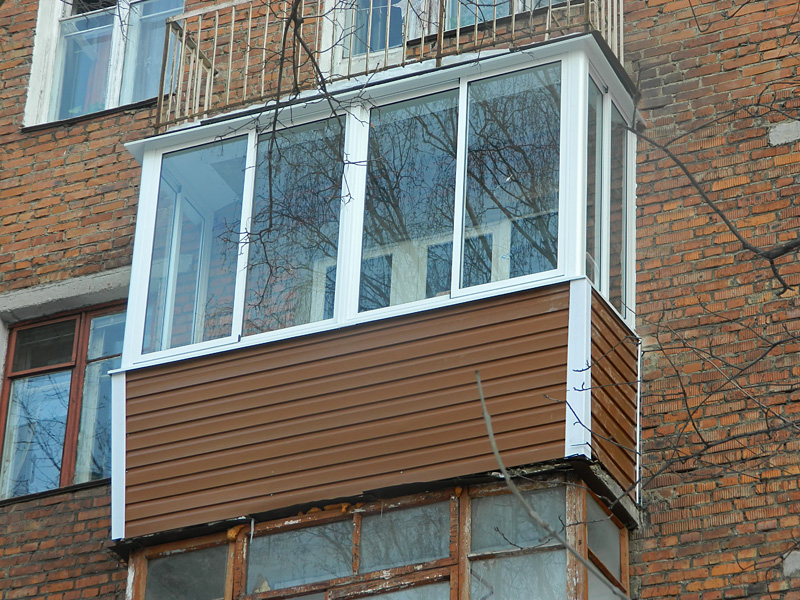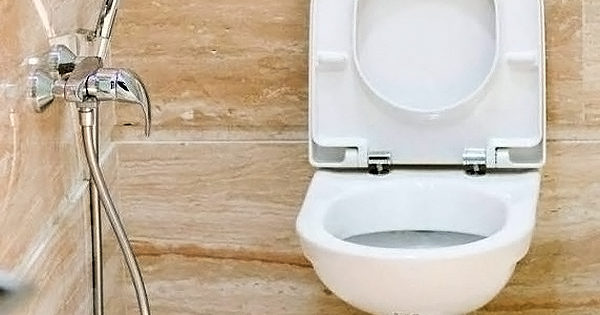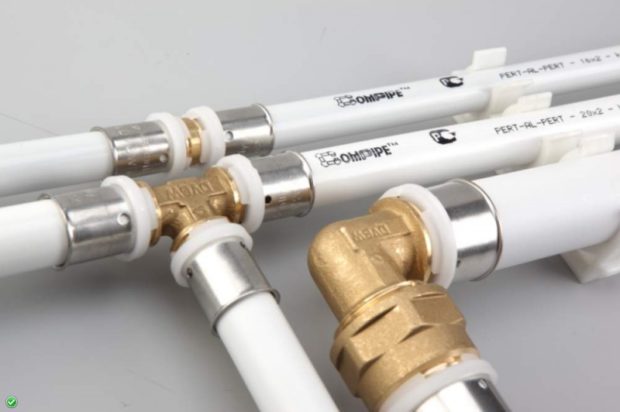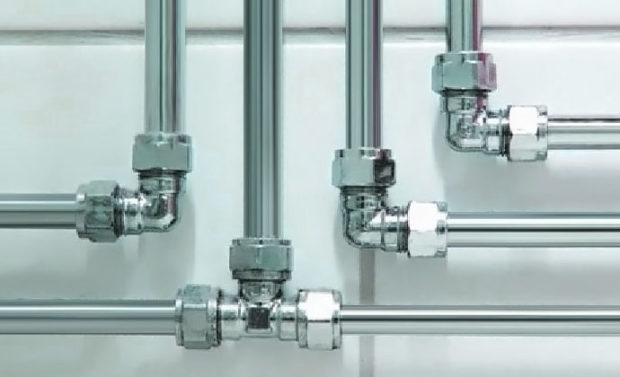Garden Watering Hose: 7 Tips For Choosing
No garden or country cottage area cannot exist without glaze. Irrigation systems are different, but in most of them one of the main roles is played by skillfully selected hose. The variety of such a seemingly simple element is simply unimaginable today. Let's figure out which garden hose really worth buying for watering, and consider selection tips from experienced gardeners.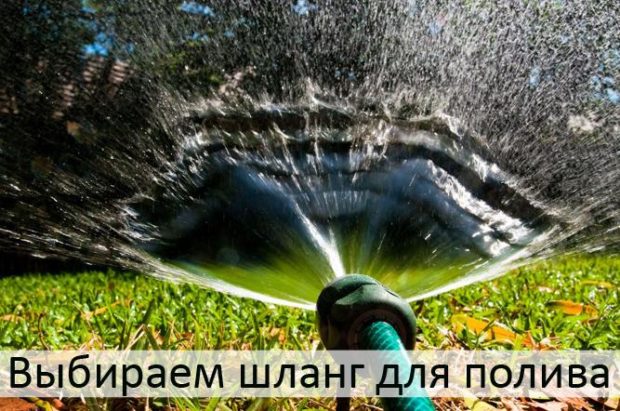
1. Material of manufacture
The choice of material is a very important criterion that determines the life of the product. Let us consider in more detail all types of materials from which modern watering hoses are made, their main features and highlight advantages and limitations each kind.
Rubber hose
The most common and affordable form, which is actively used by many consumers. It can withstand a water flow pressure of more than 8 atm., Its service life with proper operation is about 10 years. Conditions his application universal. It is mainly used to organize permanent irrigation systems. A rubber hose can maintain its properties in a wide temperature range - from -30 ° C to + 90 ° C. This inexpensive material has a number of advantages:
- Storage in unheated rooms is possible without harm to the product;
- Its structure remains stable even under prolonged exposure to ultraviolet rays;
- Not affected by temperature changes;
- Resists the damaging effects of chemicals;
- Resistant to external deformations;
- It has a long service life.
Despite significant advantages, like any product, the rubber hose is not without disadvantages:
- It has significant weight, which makes its transfer around the site uncomfortable and traumatic for plants;
- Rubber refers to toxic materials, so it is strongly recommended not to use such a product for organizing systems with drinking water. And frankly cheap products can harm plants;

PVC hose
Products made of polyvinyl chloride can be either the most primitive - single-layer without a reinforcing layer, or more durable and reliable - three-layer with a reflective coating. Note, that transparent hoses are not recommended for laying along the beds, since under the influence of ultraviolet radiation, over time, its inner surface turns green and is overgrown with microorganisms.
PVC hose withstands water pressure from 1.5 to 3 amp. The wall thickness can be both minimal - 1.5 mm, and thicker - 3 mm. Feature such a hose is that it is preferred for watering plants only during their growing season. TO the benefits This product may include:
- If you purchase a reinforced multilayer hose, you will receive a product that can last about 35 years;
- Reinforcement is made in the form of cross-shaped intersections, which allows the walls to withstand pressure up to 40 bar;
- Multilayer PVC hoses include food and non-food plastic, which prevents the growth of algae in its internal cavity;
- Over a long period, hoses made of this material withstand constant pressure and provide a stable pressure of water;
- Affordable cost
Move on to disadvantages:
- The simplest single-layer hose is very thin due to which it is prone to bending, fractures, twisting, which is why they quickly lose working capacity;
- PVC products are subject to rapid burnout under the influence of sunlight;
When operating at temperatures lower than -5 ° C they quickly lose their elasticity; - The formation and development of algae and microorganisms on the inner walls of transparent products is possible;
- Unreinforced hoses have a service life of less than 3 years.

Thermoplastic Hose
Such a product withstands water pressure of more than 8 atm. It can be used at any time of the year, both for simple watering and for other horticultural purposes. Its structure and appearance remain stable and unchanged under the influence of temperatures from -50 ° C to + 90 ° C. This makes the hose made of thermoplastic elastomer practically universal. What else the benefits he possesses:
- High frost resistance;
Even when stored in an unheated room, creases do not form on the surface of the hose; - Pleasant to the touch, non-slip surface makes using the hose very convenient. Even with a large pressure of water, it will not slip out of your hands;
- Resistance to twisting;
- Increased ductility and flexibility;
- Light weight of the product;
- Resistance to ultraviolet rays and various chemicals;
- A sufficient service life is about 15 years.
TO disadvantages perhaps the higher cost than the previous types, but due to the long service life and the ability to use the hose year-round and under heavy loads, this drawback is considered uncritical.
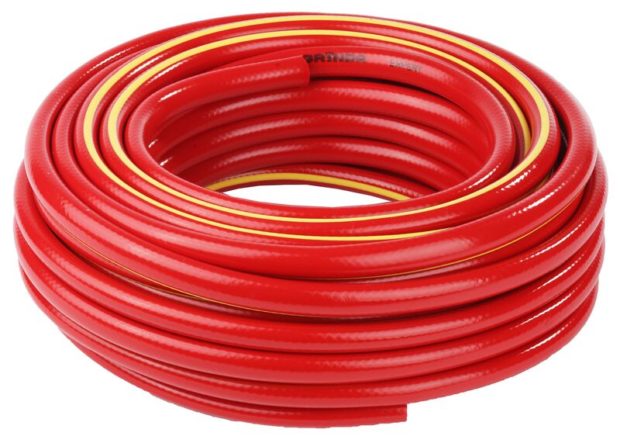
Silicone hose
This kind of garden hose is very flexible, soft and flexible. It is recommended to use it exclusively for watering the site by gravity. The silicone product retains its properties in the temperature range from -20 ° C to + 40 ° C. TO the benefits hose ductility, due to which fractures and bends are rarely formed, and its light weight can be attributed. Disadvantages A bit more:
- The hose must not be used for high pressure irrigation. This leads to tensile and cracked outer walls. Accordingly, it is impossible to provide a high pressure of the water flow;
- When used under the influence of elevated temperatures, the walls of the hose heat up and expand. During reverse cooling, microcracks form in the structure of the material, which contribute to the rapid destruction of the walls.
Based on the foregoing, it can be argued that silicone hoses can last from 3 to 5 years only if they are used correctly.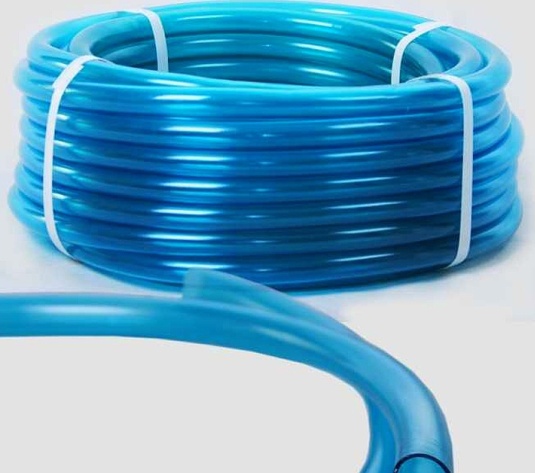
It is unequivocal to say that this or that material is better than impossible. Each species has its advantages. The key to a good choice there will be a selection of material depending on the future scope.
2. Type of execution of garden hoses
In the previous paragraph, we mentioned that a garden hose can be made differently and have different wall thicknesses. Consider in more detail the possible options:
- Single layer hose - rarely, but still found on sale. It does not have any additional coatings on the inner or outer walls. In this regard, its resistance to external environmental influences or various reagents practically tends to zero. Because of this, its service life is very limited. Such a product can only be stored in rooms with a positive temperature inside, but not exceeding + 40 ° C. Only low cost can attract it. It will be convenient to use such a hose when overflowing water from one container to smaller ones.
- Layered the hose provides stable resistance to UV and chemicals.The increased wall thickness ensures its wear resistance and a longer period of operation. Thanks to their good flexibility, multilayer hoses are resistant to twisting. They have a high throughput and are able to provide a stable pressure of water even under high pressure. These hoses optimal for daily watering. They can be stored at a wider temperature range, both twisted into a special bay, and left on the beds for the whole season.

- Reinforced the hose usually has a multilayer structure. Between the layers there is a special gasket made of reinforced fiber. This makes it possible to use such hoses under more severe conditions under heavy loads. This is true in large areas that need regular watering. Many summer residents argue that reinforced PVC or rubber hoses are the most durable and durable, and recommend using them. Due to the thickened structure, the weight of the product also increases, which also needs to be taken into account if older people use it.
- Stretchable The hose is a hose-in-hose design. Now the popular name of this type of product has become "Xhose." The inner element is made of rubber rubber, which has tremendous tensile properties. To use it conveniently, the outer layer is made of nylon threads that limit the degree of stretching of the rubber hose at the right time. Thanks to the nylon coating, the hose is practically not subject to contamination, easy to care for and has increased wear resistance. It is most suitable for watering decorative flower beds with flowers and delicate plants or for cleaning the area with a constant pressure of water. This is true for well-equipped country cottages. With absence good pressure, which is often found in summer cottages, you may not get the expected effect. One more an obstacle An uneven ground surface may become difficult to stretch and subsequently assemble the hose. The self-stretching hose has a very light weight and is quickly crumpled to compact dimensions, which makes its storage very convenient.

- Spiral the hose is very light and compact, gaining more and more popularity among experienced gardeners .. It is made of polyurethane or ethyl vinyl acetate. Able to withstand operating pressures up to 5 atm. Its feature is a high degree of stretching due to the spiral manufacturing method. So, a folded hose of a meter length can stretch to a length of 20-25 meters, while maintaining all its positive qualities. Such a hose does not break and drag on the ground, crushing plants in its path. With its help it is very convenient to carry out spot manual watering in small areas. You can operate the spiral hose at temperatures from -5 ° C to + 60 ° C.

- Corrugated the hose has a distinctive feature - its upper layer is made in the form of a corrugation, which helps to prevent the formation of creases and kinks. Corrugated products also have increased rigidity, which increases its operational life. At the same time, the product retains a small weight and a sufficient indicator of flexibility. Its scope is universal, such a design is suitable for irrigation of any kind.

3. Classification by type of purpose
Garden hoses can be used in different ways, while providing a different type of watering for plants. Depending on the features of caring for plants growing on your site and the required degree of soil moisture, distinguish five kinds watering hoses:
- Traditional - that is, the most ordinary hose without any design changes.A reliable, versatile product that can be used both for watering plants just under the root, and with a gun or spray. Optimal view for use in a small garden with unpretentious plants.
- Drip hose. Accordingly, it provides a drip system for watering plants under the root due to its special design. It is a flat tape with small holes along the entire length, located at a given distance. Such a hose is laid along the entire length of the bed and can be used for several seasons.

- Oozing a hose is not at all the same as a drip. It is made of rubber or polypropylene. Its structure has several layers. A special labyrinth is located in the cavity of the inner layer, which serves for the passage of water. And the outer layer has many micro holes that are located at a very small distance from each other. Thus, water oozes through the surface of the hose. A similar system provides a very economical watering. It is used locally, laying a hose along the entire length of the bed, but not at the roots, but preferably at a small distance from the ground. This is necessary so that the lower holes are not clogged by contact with moist soil. This is the best option to ensure constant moisture for drought sensitive plants. To use an oozing hose, simply attach it to a container of water. Disadvantage The product is that when using untreated irrigation water, the micro-holes are quickly clogged by the mechanical impurities that it contains. Against this background, over time, the internal cavity can grow with algae. Therefore, if you plan to carry out long-term watering with just such a hose, take care to install a cleaning filters and periodically clean the system.

- Porous A hose made of rubber has small openings over its entire surface for slow, continuous water passage. It is convenient to use for watering plants that are located on inclined areas or loamy soils, which are prone to erosion due to slow saturation with moisture. In other words, so that the topsoil, which is a steep slope, does not blow away by gusts of wind.
- Sprinkler hose or foggy hose - it is able to spray water through special openings at a distance of several meters, where it turns into fog and forms a continuous moist cloud. Such a hose is used for gentle watering of plants with a superficial root system. His advantage is the lack of crust on the soil, it is not able to wash delicate seedlings with a large pressure of water, but it provides a sufficient level of moisture. By adjusting the pressure of the supplied water, you can increase or decrease the covered irrigation area and the height of fog formation. If the water pressure is insufficient, watering will be superficial, and the radius of action will be strips along a system of small width.

4. Hose length and diameter
Surely you have already decided on the hose material that is right for you, with the type of hose design that will satisfy exactly your needs and the way it is used. Now it’s worth deciding on the required length and diameter. In specialized stores you can buy garden hoses for a cut or in a bay. The most common length the last option - 15, 20, 25, 30.50 meters. Most common diameters with ½ inch or 12.5-13 mm, ¾ inch or 18-19-20 mm, 5/8 inch or 16 mm, 1 inch or 25-25.4 mm or 1 and ½ inch or 31.5-32 mm
- FROM length selection it's simple - considering the size of your plot, select a value that will allow you to stretch the hose along the entire length of the beds from the water supply and diagonally on the plot. In this case, there will definitely not be enough. Consider also in what way it is possible move around your garden or garden. If you can get to the farthest beds only along the track, which is laid out with the letter "G", then you need to consider this distance to the fence point. If it’s hard for you to navigate, draw an approximate plan of the site, the location of the paths and beds on it with dimensions. Think about how the hose will be positioned when watering, and simply add up all the distances you need to cover. If you choose a drip irrigation hose or an oozing hose, which implies an arrangement along the entire length of the plantings, add up the length of the plot as many times as you have beds and remember to consider the distance to the tap. If necessary and for convenience, several hoses of different lengths can be interconnected using connectors which can be made in the form of a Christmas tree, tee or cross. They are fastened with galvanized or stainless steel clamps with worm or bolt connections. But keep in mind that a large number of connections impairs the speed and power of the water supply.

- Regarding diameter selection. Main rule - the diameter of the inner, not the outer hole, must be directly proportional to the length of the hose. Only in this case you can provide a constant and sufficient pressure of water. If the hose length is short and the maximum hole diameter is selected, you will get a thin stream. The pressure of the water is simply minimized in the wide internal cavity. Also, the large diameter of the hole implies the presence of high water pressure. If your site does not differ in this indicator, then it is better to purchase hoses with a smaller diameter. Conclusion - the longer the hose, the larger the diameter should be, provided that water is supplied under sufficient pressure.
5. The choice of working pressure and temperature range
By selection of working pressure is meant wall thickness selection hose. The most common single-layer hoses without reinforcement are able to withstand a pressure of not more than 2 bar, while the more durable three-layer reinforced products freely withstand a pressure of 5-6 bar. Therefore, if you see that the water pressure in your area is very large, then you should refrain from acquiring thin-walled products. Otherwise, they simply crack or burst during operation. It is better not to save and purchase more modern and improved types of hoses. The pressure in the system may fall, it may increase, surges are not ruled out, but you will be ready for this and do not damage the irrigation system. 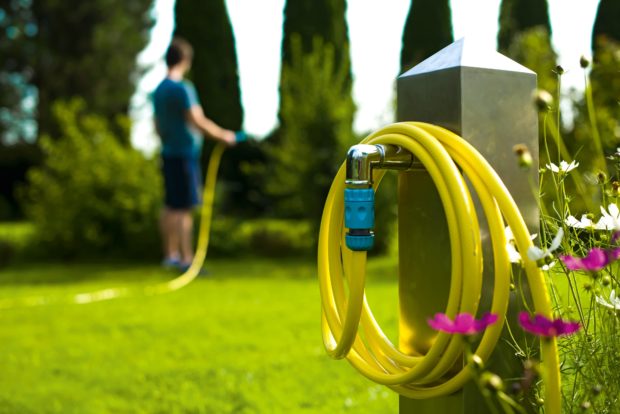 Regarding temperature range. It is clear that most watering hoses are used in the warm and hot season. Therefore, they must have an upper temperature limit of at least + 40 ° C. But at the same time, one should not forget that in the cold season, hoses will either remain on the site or will be put into the utility room. Not all such buildings are heated, so the lower limit should reach a mark of at least -20 ° C. In a word - choose products with a wider temperature range, and you will protect yourself from unnecessary extensions or cracking of the walls.
Regarding temperature range. It is clear that most watering hoses are used in the warm and hot season. Therefore, they must have an upper temperature limit of at least + 40 ° C. But at the same time, one should not forget that in the cold season, hoses will either remain on the site or will be put into the utility room. Not all such buildings are heated, so the lower limit should reach a mark of at least -20 ° C. In a word - choose products with a wider temperature range, and you will protect yourself from unnecessary extensions or cracking of the walls.
6. Storage and operation
Despite the high degree of wear resistance of the same PVC hoses, such garden tools need careful storage and operation, and even the above material is no exception. Follow this simple recommendations and your irrigation system will serve the promised period without difficulty:
- Putting the hoses in storage at premise, it is better to carefully reel them into bays. Do not drop the hose directly onto the floor; it may be damaged by rodents. It is better to wrap them in a bag or factory packaging and hang them on a hook on the wall;
- Even hoses with a high limit of positive temperatures should not be stored under the scorching sun. Place them in a lightproof box or cover with a tarp;
- Do not place water buckets, cars, carts, or other heavy objects on hoses;
- Moving the hose behind you from the garden to the garden, make sure that it does not rub against sharp corners and objects;

- If necessary, increase the pressure of water, do it smoothly;
- Do not exceed the permissible pressure limit on the hose, otherwise it may burst;
- Before putting the hose into the utility room, be sure to drain the remaining water from it and let it dry completely. This will prevent education. mold and other bacteria.
7. What to look for directly when buying
Select again highlights, which will allow you to purchase a quality product with a long service life:
- Choose light-tight hoses, this will protect against the unwanted appearance of microorganisms and green walls;
- It is not recommended to purchase cheap Chinese-made hoses that have a characteristic unpleasant odor of naphthalene. It will be unpleasant to work with such a product, and the smell can remain persistent for a long time. It is worth considering also about the quality of the materials used with such a smell. It is possible that they can harm young plants;
- Pay attention to the appearance of the product. The color along the entire length should be uniform. The surface should be smooth, but not slip out of hands. In addition to the fact that the hose must lie securely in your hand, it must also slide freely along the soil;

- When buying spiral hoses, consider the perimeter of the site. In large areas, it may be ineffective. And it will be very tiring and long to water the beds of such a scale manually;
- The minimum length of the garden hose should be equal to the maximum distance from the place of water supply to the farthest bed;
- If you still could not determine the diameter of the inner hole - contact the seller for help;
- Buy products with a wide range of operating temperatures.

